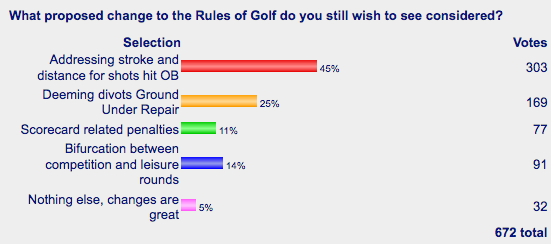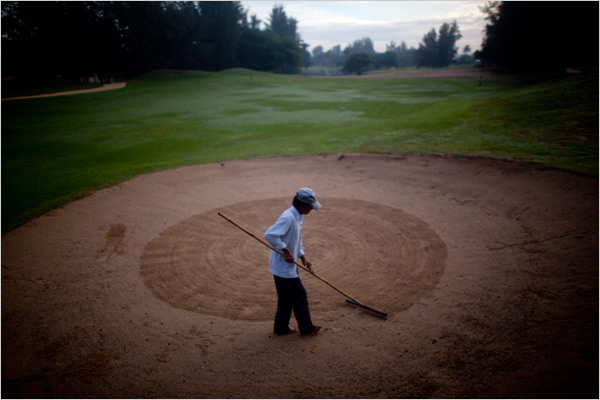Scheduled for a rollout on Golf Channel's Morning Drive (7 am Wednesday) along with a media teleconference at the same time, the new Rules of Golf will aim to "modernize the Rules and make them easier to understand and apply."
 The expedited proposal, going out for public consideration with a January 1, 2019 implementation goal, appears determined to speed up the game and, intentionally or not, bifurcate elite tournament golf and the everyday game.
The expedited proposal, going out for public consideration with a January 1, 2019 implementation goal, appears determined to speed up the game and, intentionally or not, bifurcate elite tournament golf and the everyday game.
From the materials I've seen and in discussions with those briefed, here are the highlights of the many "relaxed" rules (where have I heard that term?):
--No more penalties for accidentally moving a ball on the putting green or in searching for a ball
--Golfers may putt without having the flagstick attended or removed. A speed of play, play.
--Repairing spike marks and other damage on the putting green to be allowed. Not a speed of play helper.
--More red hazard lines to include desert areas and no penalty for touching the hazard in such an area, which also includes moving loose impediments.
--In bunkers, no penalty for touching loose impediments or for touching the sand with a hand or club. Still no grounding the club next to the ball or in front of the ball. We'll call this the Anna rule.
--We trust you, we really really trust you rules. This is a video evidence situation again, allowing for "reasonable judgement" when estimating point of entry drops, etc...
--Reduced time for searching for a lost ball from five down to three minutes
--You can keep playing a damaged club during a round. No penalty for an altered club, even if you wrapped it around a tree in a childish hissy-fit.
--Use of distance measuring devices permitted at all times, except by Local Rule (this should be fun for Augusta and the PGA Tour).
--No more caddies lining up players before a shot. This was almost strictly an LPGA Tour problem.
--A new “Maximum Score” form of stroke play, where your score can be capped to a number set by the Committee. In this proposed format you can pick up and move to the next hole when your score "will be at or above the maximum."
--New presentation of how the rules are presented
--New "plain" language in the writing of the rules
So what stands out?
For my money, the positives are various headache situations in everyday tournament golf coming to an end.
The use of rangefinders will be applauded, hailed and declared the key to speeding up the game. Little difference will be seen, but at least we'll be able to put another savior to bed on the pace of play front.
The ability to repair "spike" marks in a sport almost devoid of spikes contradicts the efforts to speed up the sport and appears to be mostly for tour players.
 It's time for an emergency meeting of the Five Families. These wars need to happen once every ten years or so.
It's time for an emergency meeting of the Five Families. These wars need to happen once every ten years or so.















